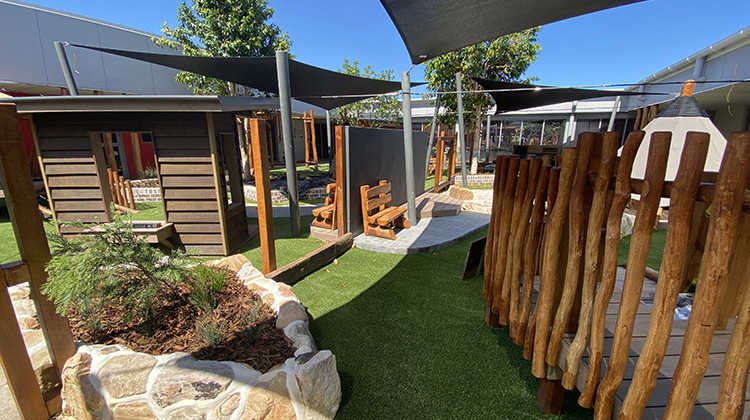Theory at heart of Gold Coast early learning facility

Completed over two years with over $2 million invested the Active Early Learning (AEL) study by the University of Canberra and Deakin University’s leading researchers resulted in an integrated curriculum that has been proven to positively impact children’s social, emotional, cognitive, and physical development.
The curriculum was front of mind when Harmony Early Learning built and launched its new facility in Hope Island, Gold Coast and the early learning centre’s built environment was designed to promote physical activity and a connection among children that improves behaviour, self-esteem, and academic performance.
The ongoing implementation of the curriculum at Hope Island will be overseen by Harmony’s Centre Director, Ms Jasmine Facey.
“AEL is all about integrating physical literacy into children’s daily routines and is delivered by our professional educators in collaboration with the Australian College of Physical Literacy. Building physical competence and confidence through activities designed to encourage the enjoyment of being both physically and mentally active underwrites everything that we do,” said Ms Facey.
“The full curriculum and activities are included in everyday fees, it is fundamentally important to our entire approach that children are supported by an equal playing field with equal opportunities,” she said.
Peter Warner, Chief Executive Officer of Harmony Early Learning, said that active design spaces and a focus on a sense of community will be increasingly important in supporting developmental milestones, particularly through difficult times that can feel confusing and unstable.
“We wanted to use safe, natural materials, and large floors and walls to allow for areas of creation with different degrees of transparency and scale. The result is an aesthetically comforting and exciting place for children to grow and learn with one another.
“We’ve also increased exposure to green spaces to stimulate positive health outcomes, including stress management and improved mental health, which is becoming so critical in our society, and developed learning spaces that have both natural and built features to connect children to nature and facilitate creative physical activity. The effect is a facility unlike anything we’ve produced or seen produced in Australia before.
“Environment plays a pivotal role in a child’s development, physical health and wellbeing, and directly affects their interaction with society. With the pandemic challenging us all over the past year, rarely has there been a greater need for a normal and stable environment to deliver healthy personal development for our children,” said Mr Warner.
The facility has been developed to reproduce a community atmosphere and encourage the participation of the parents in the development of their children.
“It has been well documented that the role of parents and community in the social development of children is vital, and we wanted to design the facility in a way that allowed for parents to develop that community around their children,” said Mr Warner.
“The Harmony Hope Island complex has a cafe and social areas for parents to meet and have a coffee after dropping off the children, fostering an interconnectedness in the lives of their children that can provide stability and opportunities for further interaction in different environments.
“As part of this broader community development, we’ve also partnered with the Rackley Swimming centre, which is within the same complex as our centre. Their team can collect swimming groups from the centre in the afternoon and take them for their lessons, saving our parents a lot of time but more importantly allowing the children to move and engage in different activities as a community. These activities are excellent for social development.”